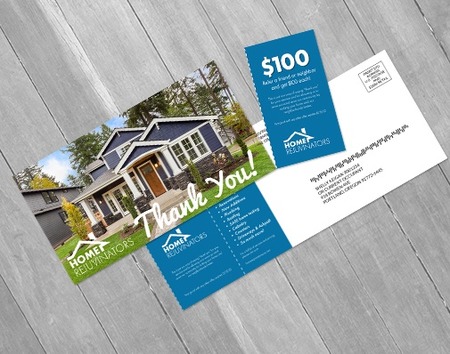Your Guide on How to Address Postcards: The Correct Way to Address Postcards

Postcards continue to be an effective and impactful means to reach your target consumers. More so in the pandemic, with more individuals staying and working from home. Unlike fleeting Instagram ads to large billboards passers-by can ignore, your consumer has the time, space, and attention to focus on a postcard. Thus, addressing each postcard correctly and ensuring your message reaches the right market is crucial. Find out how to correctly address a postcard and the USPS requirements for several that will be delivered to a specific mailing list.
How to Address Postcards
A postcard has a front side with your primary design and a backside that contains the recipient’s address. If you’re wondering where to address a postcard, you’ll have to focus on the backside that comes in two equal sections.
Vertically divided cards have a left and side section. The left side is where you place your message, while the postcard address side is on the right. The USPS allows addresses to be handwritten or pre-addressed. Do not go over the vertical line separating the left and right sides when writing the address or message.
Horizontally divided cards have an upper and lower section that may or may not have a horizontal rule. So, where does the address go on a horizontal postcard? The side you don’t use for your message is where you’ll place the postcard address. For example, if you write the address on the lower section, other important details like postage, return address, and any USPS marking will be on the upper section. Note that the return address, postage, or any Postal Service marking should appear with the postcard’s destination address.
If you’re wondering how to address a blank postcard or a postcard without lines, write the address first on its designated side. Always start with the address before composing the message. Whether using a horizontal or vertical postcard, always address the recipient on the backside. The front side is utilized for your central image or general message if you’re sending a promotion to a larger audience. The backside of your message offers you an opportunity to personalize the message, which increases the chances of your recipient reading the postcard. Don’t forget to include a return address on the postcard if it’s sent to the wrong recipient or a changed address. Once you’ve completed these sections, you can place the stamp in the upper right corner.
How to Write a Postcard Message
Creating a handwritten message gives your postcard a more personal touch compared to mass-produced types. If you don’t have the time, invest in handwriting your recipient’s name in each postcard. Your potential customers will appreciate the time and effort, making them more likely to read the message. It also helps to close the message with a greeting you’d give a friend, such as “see you soon” or “cheers.”
Keep these reminders and tips in mind when crafting the body of your postcard message:
- Study how your potential customers write their reviews or reviews of your competitors. Apply their language and tone so that they can easily relate to your message.
- Stick to a short, sweet, and straightforward message. Your recipients will not read a lengthy message.
- Always write with your postcard’s call-to-action in mind and ensure every sentence leads them to that.
- Give your message a light and fun theme. Potential customers are more likely to remember and respond to a lighthearted message.
USPS Share Mail® Postcard Requirements
Looking for a word-of-mouth marketing tool that utilizes the power of direct mail and lets you communicate with customers? USPS offers Share Mail®, “a customized direct mail product that works like a word-of-mouth marketing tool.” In this setup, customers and mailers have a direct line of communication with a postcard sent through a USPS commercial mailer. You'll enclose the Share Mail postcard in the direct mail piece. Customers can mail the enclosed postcard you send to a friend, colleague, or neighbor, which enables organic communication about your business.
Share Mail® postcards need to meet First-Class Mail eligibility. Below are the requirements for each mail piece to qualify:
- Length: 5"-6"
- Height: 3 1/2"- 4 1/4"
- Thickness: .009" - .016"
- Aspect ratio: 1.3-2.5 (length divided by height)
- Non-glossy paper
Your postcard sent under USPS Share Mail® also needs to fulfill the following Postal Service specifications:
- Intelligent Mail barcode (IMb) - What the Postal Services uses to track and count your Share Mail postcards for payment and reporting. The IMb consists of other features:
- Mailer ID (MID) comes with your account holder-generated IMb from the Postal Service. You should be enrolled in the Share Mail program to receive the six- or nine-digit MID. It would help if you had the MID before submitting your mailpiece design sample for review. The MID is used to identify the mail shape and account holder. You should only apply the MID to your Share Mail postcards, as a different MID is given for letters and postcards.
- Service Type Identifiers (STID) distinguish their respective IMb that the Postal Service will use to differentiate, identify, and account for the Share Mail pieces.
- Facing Identification Mark (FIM E) – The Postal Service requires an FIM E for Share Mail postcards. These will be used to orient your postcard for processing. You cannot use the FIM E for any other mail besides Share Mail.
- Indicia is on the upper right corner of the Share Mail postcard’s address side.


